Monthly Archives: October 2020

 I first met my nephew, Riley Birky, when he was 9 years old, and his mom, Rachel Schulenberg married my brother-in-law, Ron Schulenberg. Over the years that he has been in our family, Riley has gone through the fairly typical years of a kid, with the teen years being typically the most tumultuous, as is the case with most teens. While those were tough times for Riley, one thing that you could always count on, was that you could always count on Riley. Riley might not have always been excited about helping out, but if he said he would help you with something, he would. He always had a tendency to take care of everybody before himself. If there is a call for assistance with something, Riley will be the first to respond. His mom say of Riley, “He is so brave and committed and always striving to do his best.”
I first met my nephew, Riley Birky, when he was 9 years old, and his mom, Rachel Schulenberg married my brother-in-law, Ron Schulenberg. Over the years that he has been in our family, Riley has gone through the fairly typical years of a kid, with the teen years being typically the most tumultuous, as is the case with most teens. While those were tough times for Riley, one thing that you could always count on, was that you could always count on Riley. Riley might not have always been excited about helping out, but if he said he would help you with something, he would. He always had a tendency to take care of everybody before himself. If there is a call for assistance with something, Riley will be the first to respond. His mom say of Riley, “He is so brave and committed and always striving to do his best.”
Those kid days are long gone now, and Riley is grown up. He works very hard doing concrete work at Griffis Quality Fencing and Welding in Powell, Wyoming. Riley likes his job and is a great employee. He finds the work interesting. Riley has grown into a good man, and that is one of the best things that can be said about a man. Riley likes his job, but it isn’t all that he is about. Like most people, your job is what you do to earn money to do what you want to do. Riley likes adventure…doing something new and exciting. He also loves the outdoors.

 Riley has grown up so much in the past year. He has a great group of friends, who have been there for him. He has also been blessed with a wonderful girlfriend, Sierah Martin, and her two-year-old son, Jace. Riley loves kids, and was always such a great big brother to his brother, Tucker Schulenberg. They don’t get to see each other as much as they used to, since Tucker lives in Casper, but they are still close. Riley was also blessed this year to become a godparent to a sweet little boy. I think that has been a great honor to him. Today is Riley’s 20th birthday. Happy birthday Riley!! Have a great day!! We love you!!
Riley has grown up so much in the past year. He has a great group of friends, who have been there for him. He has also been blessed with a wonderful girlfriend, Sierah Martin, and her two-year-old son, Jace. Riley loves kids, and was always such a great big brother to his brother, Tucker Schulenberg. They don’t get to see each other as much as they used to, since Tucker lives in Casper, but they are still close. Riley was also blessed this year to become a godparent to a sweet little boy. I think that has been a great honor to him. Today is Riley’s 20th birthday. Happy birthday Riley!! Have a great day!! We love you!!

 My nephew, Steve Moore loves to go camping in the Big Horn Mountains, and takes his family up there often. They hike the area in search of rocks and artifacts. Steve is an outdoor kind of guy, and is in his element when he is in the great outdoors. It’s not that Steve can’t do other things, but the great outdoors is just where he feels most at home.
My nephew, Steve Moore loves to go camping in the Big Horn Mountains, and takes his family up there often. They hike the area in search of rocks and artifacts. Steve is an outdoor kind of guy, and is in his element when he is in the great outdoors. It’s not that Steve can’t do other things, but the great outdoors is just where he feels most at home.
Steve and my niece, Machelle Moore have two sons…Weston, who is 20 years old; and Easton, who is 16 years old. Of course both boys drive these days, and anyone who has ever owned a vehicle knows that they need occasional maintenance and repair. Most of 
 the time, a vehicle can go a long time before needing repair, but for the Moore family, lately it seems like every vehicle needs something. Steve has been quite busy with multiple maintenance projects of the various vehicles. Unfortunately, while Steve can work on vehicles, he really hates working on vehicles. He has fixed brakes and rotors on the truck he and Machelle own. Then Weston’s new truck needed so work done. After that Easton’s car needed a power steering pump. And just when he thought he was done, Weston’s truck needs work done on the steering and tie rods, because the tires are wearing fast. Then, Steve and Machelle’s other truck needs some work in that sale department, because it’s a little squirrely on the road. Their Tahoe needs the same things as Weston’s vehicle. It’s not as bad as Weston’s, but they need to get it done before they have to get new tires too. They fully understand that vehicles need work, but it would be nice if things to happen one thing
the time, a vehicle can go a long time before needing repair, but for the Moore family, lately it seems like every vehicle needs something. Steve has been quite busy with multiple maintenance projects of the various vehicles. Unfortunately, while Steve can work on vehicles, he really hates working on vehicles. He has fixed brakes and rotors on the truck he and Machelle own. Then Weston’s new truck needed so work done. After that Easton’s car needed a power steering pump. And just when he thought he was done, Weston’s truck needs work done on the steering and tie rods, because the tires are wearing fast. Then, Steve and Machelle’s other truck needs some work in that sale department, because it’s a little squirrely on the road. Their Tahoe needs the same things as Weston’s vehicle. It’s not as bad as Weston’s, but they need to get it done before they have to get new tires too. They fully understand that vehicles need work, but it would be nice if things to happen one thing 
 at a time. Thank God, that has been the way it was, or Steve might have been worn out completely.
at a time. Thank God, that has been the way it was, or Steve might have been worn out completely.
In between all the mechanic work, Steve and Machelle have been able to get fire wood this summer. They have been getting wood for Machelle’s parents, LJ and Debbie Cook too. This year they were able to get everybody enough wood to get through the winter, even enough for LJ to hang out in the garage tinkering on his projects; and for them to hang out by their fire pit too. Steve is a great son-in-law, a great husband, and a great dad to his family. Today is Steve’s birthday. Happy birthday Steve!! Have a great day!! We love you!!
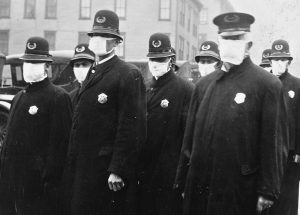 As the Covid-19 Pandemic has spread across our nation, so has the battle for or against the wearing of face masks. Part of the problem has been the conflicting analysis as to the value of the masks between one doctor and another, one politician and another, or even the same doctor at different times during the crisis. Many states, cities, and even establishments have rules about wearing a mask, with varied levels of enforcement. Of course, we were told to “shelter in place” and close any “non-essential” businesses, a catastrophic event for the economy. Everything from schools to bars, and theaters to salons was closed. Cities became virtual ghost towns, and things like Facebook and Twitter, Zoom and Google Classroom, texting and phone calls became vital. People’s sanity began to take a hit, and loneliness became the norm…especially for anyone who lived alone.
As the Covid-19 Pandemic has spread across our nation, so has the battle for or against the wearing of face masks. Part of the problem has been the conflicting analysis as to the value of the masks between one doctor and another, one politician and another, or even the same doctor at different times during the crisis. Many states, cities, and even establishments have rules about wearing a mask, with varied levels of enforcement. Of course, we were told to “shelter in place” and close any “non-essential” businesses, a catastrophic event for the economy. Everything from schools to bars, and theaters to salons was closed. Cities became virtual ghost towns, and things like Facebook and Twitter, Zoom and Google Classroom, texting and phone calls became vital. People’s sanity began to take a hit, and loneliness became the norm…especially for anyone who lived alone.
It’s been a grim time, but it isn’t the first time. During the 1918 Spanish Flu Pandemic, mask wearing started with the first masks being made out of gauze, which was quite porous. Still, in an effort to stop the spread, or as we would say these days, flatten the curve, all the people were now asked to wear masks. In fact, in the Fall of 1918, it became mandatory. With the second surge in December 1918, new restrictions went into place. The January 1919 ordinance had a much larger impact in creating resistance to wearing a mask in public by American citizens. However, it too was short lived, and on February 1, 1919 the city ordinance requiring every citizen of San Francisco going out in public to wear masks was voted down. The mandatory mask laws for COVID-19 are not new. This has already happened twice in American history and if you do feel strongly about not wearing one, it has been protested successfully before in a pandemic caused by a much deadlier virus.
I don’t believe the resistance, with was called the Anti-Mask League of San Francisco fell along party lines, like 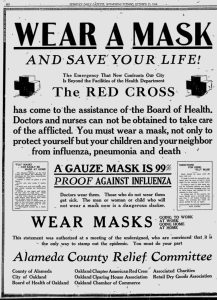 much of today’s resistance seems to be, but were rather a diverse bunch of individuals with varying professional backgrounds. Its members included physicians, libertarians, and many others. Many of the same arguments we have today, were in place then, and it is debatable as to whether or not the masks of today are any better than the ones back then…with the possible exception of the medical grad hazard wear, the N-95 mask, and the Head gear. Pretty much everything we’ve tried with Covic-19 was also used in 1918 to try to prevent the spread of the flu…close schools, wear masks, don’t cough or sneeze in someone’s face, avoid large events and hold them outside when possible, and of course, no spitting. There were many ways to get the word out, like in Philadelphia, where streetcar signs warned “Spit Spreads Death.” In New York City, officials enforced no-spitting ordinances and encouraged residents to cough or sneeze into handkerchiefs (a practice that caught on after the pandemic). The city’s health department even advised people not to kiss “except through a handkerchief,” and wire reports spread the message around the country. I don’t know…does any of this sound familiar to you, because it sure does to me. I guess there really is nothing new under the sun. In western states, some cities even called mask ordinances a patriotic duty. In October 1918, the San Francisco Chronicle ran a public service announcement telling readers that “The man or woman or child who will not wear a mask now is a dangerous slacker.” This was in reference to the type of World War I “slacker” who didn’t help the war effort. One sign in California threatened, “Wear a Mask or Go to Jail.” The PSA in the Chronicle appeared on October 22, just over a week before San Francisco had scheduled its mask ordinance to begin on November 1. It was signed by the mayor, the city’s board of health, the American Red Cross and several other departments and organizations, and it was very clear about its message: “Wear a Mask and Save Your Life!”
much of today’s resistance seems to be, but were rather a diverse bunch of individuals with varying professional backgrounds. Its members included physicians, libertarians, and many others. Many of the same arguments we have today, were in place then, and it is debatable as to whether or not the masks of today are any better than the ones back then…with the possible exception of the medical grad hazard wear, the N-95 mask, and the Head gear. Pretty much everything we’ve tried with Covic-19 was also used in 1918 to try to prevent the spread of the flu…close schools, wear masks, don’t cough or sneeze in someone’s face, avoid large events and hold them outside when possible, and of course, no spitting. There were many ways to get the word out, like in Philadelphia, where streetcar signs warned “Spit Spreads Death.” In New York City, officials enforced no-spitting ordinances and encouraged residents to cough or sneeze into handkerchiefs (a practice that caught on after the pandemic). The city’s health department even advised people not to kiss “except through a handkerchief,” and wire reports spread the message around the country. I don’t know…does any of this sound familiar to you, because it sure does to me. I guess there really is nothing new under the sun. In western states, some cities even called mask ordinances a patriotic duty. In October 1918, the San Francisco Chronicle ran a public service announcement telling readers that “The man or woman or child who will not wear a mask now is a dangerous slacker.” This was in reference to the type of World War I “slacker” who didn’t help the war effort. One sign in California threatened, “Wear a Mask or Go to Jail.” The PSA in the Chronicle appeared on October 22, just over a week before San Francisco had scheduled its mask ordinance to begin on November 1. It was signed by the mayor, the city’s board of health, the American Red Cross and several other departments and organizations, and it was very clear about its message: “Wear a Mask and Save Your Life!”
“Red Cross headquarters in San Francisco made 5,000 masks available to the public at 11:00am, October 22. By noon it had none,” wrote the late historian Alfred W Crosby in America’s Forgotten Pandemic: The Influenza of 1918. “By noon the next day Red Cross headquarters had dispensed 40,000 masks. By the twenty-sixth 100,000 had been distributed in the city… In addition, San Franciscans were making thousands for themselves.” Lasting from February 1918 to April 1920, the Spanish Flu Pandemic infected 500 million people…about a third 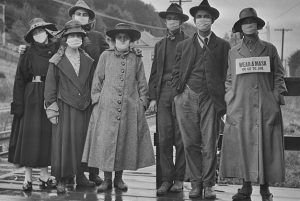 of the world’s population at the time, in four successive waves. The death toll is typically estimated to have been somewhere between 17 million and 50 million, and possibly as high as 100 million, making it one of the deadliest pandemics in human history. With all the safeguards, and the lack of success in “stopping the spread,” I guess it is up to each individual to decide on the effectiveness, or the lack thereof, concerning the safeguards that were put in place. To me, it seems that we have done pretty much the same things today as they did in 1918, so only time will tell us if they were successful, or a waste of time and money. Still, since the Spanish Flue had 4 waves, it doesn’t seem like we successfully stopped anything.
of the world’s population at the time, in four successive waves. The death toll is typically estimated to have been somewhere between 17 million and 50 million, and possibly as high as 100 million, making it one of the deadliest pandemics in human history. With all the safeguards, and the lack of success in “stopping the spread,” I guess it is up to each individual to decide on the effectiveness, or the lack thereof, concerning the safeguards that were put in place. To me, it seems that we have done pretty much the same things today as they did in 1918, so only time will tell us if they were successful, or a waste of time and money. Still, since the Spanish Flue had 4 waves, it doesn’t seem like we successfully stopped anything.
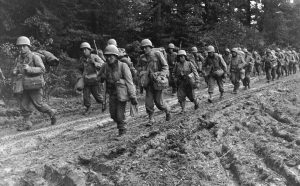
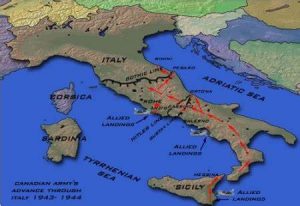 During World War II, when Japan was the enemy, and the United States just happened to have a Japanese population of between 110,000 and 120,000 people of Japanese ancestry. The government decided to place these people in internment camps, mainly because they were not sure of their loyalty. Sixty-two percent of the internees were United States citizens, but somehow that didn’t matter. The American people and the government were afraid of them. Maybe it made no sense, but there it was.
During World War II, when Japan was the enemy, and the United States just happened to have a Japanese population of between 110,000 and 120,000 people of Japanese ancestry. The government decided to place these people in internment camps, mainly because they were not sure of their loyalty. Sixty-two percent of the internees were United States citizens, but somehow that didn’t matter. The American people and the government were afraid of them. Maybe it made no sense, but there it was.
While their families were interned in camps at home, a group of Japanese-Americans, were serving their country as members of the 100th Infantry Battalion and the 442nd Infantry Regiment. The 100th Infantry Battalion was composed mainly of Nisei…the American born children of Japanese immigrants. They were fighting for the allies on the Western Front of World War II. While the American people did not trust the Japanese immigrants or their children, this unit, out of all units of comparable size and length of service, the 442nd Regimental Combat Team (RCT) is, to this day, the most decorated unit in American military history.
Most of the men in the 100th Infantry Battalion were former Nisei members from the Hawaii National Guard. These brave men fought to capture the fortress of Monte Cassino in Italy. It was in this battle that the 100th Infantry Battalion first earned the nickname “Purple Heart Battalion.” The battle to capture the fortress of Monte Cassino was an important stage in the offensive to liberate Rome from Axis leaders. The 100th Infantry Battalion later became incorporated into the 442nd RCT, which drew most of its forces from mainland Nisei volunteers, after the regiment arrived in Europe.
During the war, one battle stood out…at least in my mind. It was one that proves without a doubt, the extreme loyalty and courage of this unit. Among their other military accomplishments, the 442nd RCT was instrumental in the rescue of the “Lost Battalion.” In a daring last-ditch effort, members of the 442nd RCT were ordered to rescue a battalion of Texans surrounded by German troops in the Vosges Mountains of eastern France. Although the Nisei knew that they would suffer heavy casualties, many saw the mission as a chance to prove their loyalty. The regiment was also critical in the breach of the Gothic Line. Embedded within the Apennine 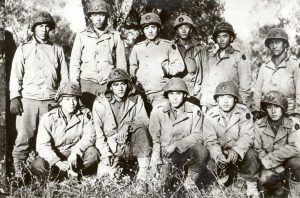
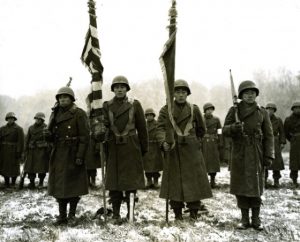 Mountains, it was Germany’s last major line of defense in the Italian Campaign. Later, members of the regiment were present at the liberation of the infamous Dachau concentration camp in Germany. For some of the soldiers, the experience was a bittersweet one; although they were able to emancipate the prisoners of the camp, they could not help but remember their detained families at home.
Mountains, it was Germany’s last major line of defense in the Italian Campaign. Later, members of the regiment were present at the liberation of the infamous Dachau concentration camp in Germany. For some of the soldiers, the experience was a bittersweet one; although they were able to emancipate the prisoners of the camp, they could not help but remember their detained families at home.
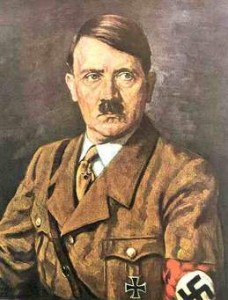 I am always amazed at the lengths nations will go to try to have a better weapon with which to war against their enemies. Some of the weapons were horrifically great successes, while others only succeeded in being amusingly unsuccessful. It seems that the Germans were famous for trying to come up with unusual ideas for weaponry. In fact, World War II seemed to be full of bizarre weapons.
I am always amazed at the lengths nations will go to try to have a better weapon with which to war against their enemies. Some of the weapons were horrifically great successes, while others only succeeded in being amusingly unsuccessful. It seems that the Germans were famous for trying to come up with unusual ideas for weaponry. In fact, World War II seemed to be full of bizarre weapons.
Wars always present opportunities for technological development, but Germany seemed to be particularly motivated to pour considerable resources into weapons projects. The level of success, varied with the weapons. That is not unusual, as weapons go, but I think that when you look some of the bizarre weapon designs that Germany came up with really seemed like a recipe for calamity to me. The weapons they came up with had varying degrees of success. The Germans developed the V-2 rocket, which both rained destruction on the United Kingdom and jumpstarted the space race. On the other hand, they also tried to build a “sun gun,” an orbital heat ray that was supposed to use reflected sunlight to torch cities.
The V-3 cannon project falls in the middle of the spectrum of weaponry. In the end, it never threatened the Allied powers, but if it had been given more production time, it very well could have. The V-3 was an extremely long artillery piece, over 430 feet in length. It was designed to fire projectiles up to a distance of 100 miles away. The V-3 cannon was built to bombard British cities from mainland Europe, bypassing the need for planes or the V-2. These enormous guns had been in development since World War I, on both sides of the conflict, but to this point these weapons hadn’t been deployed in combat. The problem was that the size of an explosion needed to propel a projectile over such a distance was so large that it would quickly destroy any gun barrel. They just couldn’t get that part fixed.
At the outbreak of World War II, the Germans rediscovered the plans for the V-3 and began to research them 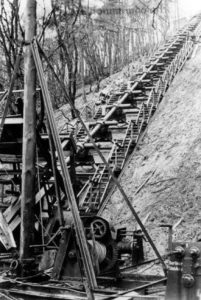 again. In 1943, Hitler restarted the V-3 project under his Armaments and War Procurement Minister, Albert Speer. The first goal was to solve the explosion problem. It was decided that the V-3 would use several small explosions that would propel the projectile along the barrel. Even with that change, the barrel was so large and unwieldy that it couldn’t be aimed. It had to be built already aiming at the intended target, and the target had to be the size of a city. That is a tall order.
again. In 1943, Hitler restarted the V-3 project under his Armaments and War Procurement Minister, Albert Speer. The first goal was to solve the explosion problem. It was decided that the V-3 would use several small explosions that would propel the projectile along the barrel. Even with that change, the barrel was so large and unwieldy that it couldn’t be aimed. It had to be built already aiming at the intended target, and the target had to be the size of a city. That is a tall order.
The Germans made plans to build 50 V-3 cannons on the French coastline, but RAF bombings delayed the project. When the Allies retook France in 1944, the V-3 project was again abandoned. The Allies didn’t learn of the V-3 project until after World War II had ended. Winston Churchill said that “if the guns had been completed, they could have devastated England more than any other German weapon.” Thankfully the Allies retook France in time to avoid such a disaster.

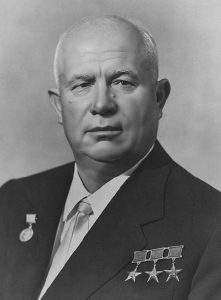 For anyone alive and of an age to remember it, the 1950s and 1960s brought with them a strange new reality. I can’t say that I fully understood it all at that time, but I remember our school having a “Fallout Shelter.” They were also called a “Bomb Shelter” in some places, and the purpose was to protect the population from exposure to the fallout from a nuclear explosion. I suppose that if I had understood more about what these were, I might have been scared, but I just remember thinking it a strange idea, and highly unlikely. It did occur to me that if a bomb to explode, it would be unlikely that we would all have time to get to the school for protection.
For anyone alive and of an age to remember it, the 1950s and 1960s brought with them a strange new reality. I can’t say that I fully understood it all at that time, but I remember our school having a “Fallout Shelter.” They were also called a “Bomb Shelter” in some places, and the purpose was to protect the population from exposure to the fallout from a nuclear explosion. I suppose that if I had understood more about what these were, I might have been scared, but I just remember thinking it a strange idea, and highly unlikely. It did occur to me that if a bomb to explode, it would be unlikely that we would all have time to get to the school for protection.
Apparently, President John F. Kennedy, agreed with me on that thought, because, when he was speaking on civil defense on October 6, 1961, he advised American families to build bomb shelters to protect them from atomic fallout in the event of a nuclear exchange with the Soviet Union. We were, after all, in the middle of the Cold War, and neither side really knew if the other side would decide that they needed to start that latest, deadly type of war with the other side. Looking back, many people aren’t sure that a home-made bomb shelter would really be able to protect the occupants from the fallout of an atomic bomb. No one can really say for sure that the government-built shelters in schools and churches could either, in retrospect.
Still, prudent minds assumed that something needed to be done. Kennedy also assured the public that the United States civil defense program would soon begin providing such protection for every American. What seemed like science fiction, became a grim possibility just one year later, when true to Kennedy’s concerns, the world hovered on the brink of full-scale nuclear war when the Cuban Missile Crisis erupted over placement of nuclear missiles in Cuba by the USSR. Of course, panic ensues. The crisis lasted for 13 days, but some Americans prepared for nuclear war by buying up canned goods and completing last-minute work on their backyard bomb shelters. In the end, of course, it all ended without. After several days of tense negotiations, Kennedy and Khrushchev reached an agreement. Publicly, the Soviets would dismantle their offensive weapons in Cuba and return them to the Soviet Union, subject to United Nations verification, in exchange for a US public 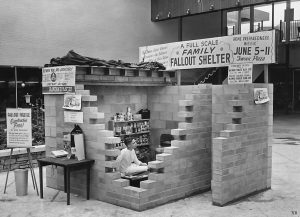
 declaration and agreement to avoid invading Cuba again. The Kennedy administration had been publicly embarrassed by the failed Bay of Pigs Invasion in April 1961, which had been launched under President John F Kennedy by CIA-trained forces of Cuban exiles. Afterward, former President Dwight Eisenhower told Kennedy that “the failure of the Bay of Pigs will embolden the Soviets to do something that they would otherwise not do.” He was right, but for now, disaster was averted.
declaration and agreement to avoid invading Cuba again. The Kennedy administration had been publicly embarrassed by the failed Bay of Pigs Invasion in April 1961, which had been launched under President John F Kennedy by CIA-trained forces of Cuban exiles. Afterward, former President Dwight Eisenhower told Kennedy that “the failure of the Bay of Pigs will embolden the Soviets to do something that they would otherwise not do.” He was right, but for now, disaster was averted.

 My uncle, Lester “Jim” Wolfe was always a crazy guy…in a good way, of course. He loved to play tricks on people, but always in good fun. Whenever he and my dad, Al Spencer got together, you knew that they were going to do the craziest of things. I don’t remember all the antics these brother-in-law pulled, not the crazy food they made, like onion and mustard sandwiches.
My uncle, Lester “Jim” Wolfe was always a crazy guy…in a good way, of course. He loved to play tricks on people, but always in good fun. Whenever he and my dad, Al Spencer got together, you knew that they were going to do the craziest of things. I don’t remember all the antics these brother-in-law pulled, not the crazy food they made, like onion and mustard sandwiches.
Uncle Jim and Aunt Ruth were always the kind of people who liked surprises. Often, they would show up at our house unannounced…from several states away, mind you. I suppose that it was a risky maneuver, from the aspect of making that long trip without getting to see the people they came to see. If we were out of town when they showed up, they never told us they had missed us. I’m not sure how they managed to find us home when they came, because our family often took trips too. My dad and his sister, Ruth had always loved to see the nation, and both did a lot of traveling in their day. When they showed up at our house, it was cause for celebration. It was just like coming home to a surprise party!! One surprise on Uncle Jim in his life was that his son-in-law, Wayne “Shorty” Cameron shared his birthday with him. I’m sure Uncle Jim liked that very much.
While they were here, we might go camping, have barbecues, or just hang out. It didn’t really matter what we 
 did, because having them here made things more fun. We also loved seeing our cousins in the early years, but as they got older, it was often just Uncle Jim and Aunt Ruth that came. Our own lives got busier too, of course. Marriages and kids made it harder to spend as much time with them on those visits as we used to. Still, when they were in town, we spent as much time with them as we could. I miss those days. Today would have been Uncle Jim’s 99th birthday, and Shorty’s 79th birthday. Happy birthday in Heaven Uncle Jim and Shorty. We love and miss you both very much.
did, because having them here made things more fun. We also loved seeing our cousins in the early years, but as they got older, it was often just Uncle Jim and Aunt Ruth that came. Our own lives got busier too, of course. Marriages and kids made it harder to spend as much time with them on those visits as we used to. Still, when they were in town, we spent as much time with them as we could. I miss those days. Today would have been Uncle Jim’s 99th birthday, and Shorty’s 79th birthday. Happy birthday in Heaven Uncle Jim and Shorty. We love and miss you both very much.
 When a plane comes down, there is always a reason. It might be mechanical, weather, the human factor, or a combination of these. Most often we don’t know the real and complete cause for a long time. On October 4, 1992, an El-Al Boeing 747 cargo jet was scheduled to bring 114 tons of computers, machinery, textiles and various other materials from Amsterdam to Tel Aviv, Israel. At 6:30pm that Sunday, Captain Isaac Fuchs piloted the jet, carrying two other pilots and one passenger, out of Schipol Airport in good weather. It was set to be a nice flight, but just minutes after takeoff, fires suddenly broke out in the plane’s third and fourth engines. Just as suddenly, they fell right off the wing. Of course, this threw the crew for a loop…literally!!
When a plane comes down, there is always a reason. It might be mechanical, weather, the human factor, or a combination of these. Most often we don’t know the real and complete cause for a long time. On October 4, 1992, an El-Al Boeing 747 cargo jet was scheduled to bring 114 tons of computers, machinery, textiles and various other materials from Amsterdam to Tel Aviv, Israel. At 6:30pm that Sunday, Captain Isaac Fuchs piloted the jet, carrying two other pilots and one passenger, out of Schipol Airport in good weather. It was set to be a nice flight, but just minutes after takeoff, fires suddenly broke out in the plane’s third and fourth engines. Just as suddenly, they fell right off the wing. Of course, this threw the crew for a loop…literally!!
Captain Fuchs knew he needed to dump the plane’s fuel and he spotted a lake nearby. He assumed he would have enough time to dump the fuel and then head back to the airport, but the plane did not have enough power to make the return trip. They were six miles short of the airport when Fuchs radioed, “Going down,” and the plane plunged straight into an apartment building in the Bijimermeer section of Amsterdam. The crash was followed by a massive fireball that exploded through the building. Firefighters rushed to the scene. The fire was horrific, and by the time the fire was under control, about 100 people were dead. No one knew the exact number, because the explosion made body identification extremely difficult. Unfortunately, the building housed mainly undocumented immigrants from Suriname and Aruba, also  making the number of casualties harder to ascertain.
making the number of casualties harder to ascertain.
When the accident investigation was completed, it was found that like a similar accident in Taiwan less than a year earlier, the problem was found to be related to a fuse pin, part of the mechanism that binds the engines to the wings, so in both cases, the problem was caused by fatigue and the ultimate failure of this part. Sadly, it often takes a tragedy of this magnitude to bring about the change that puts closer inspections in play. Of course, the ultimate price paid is in the lives lost.
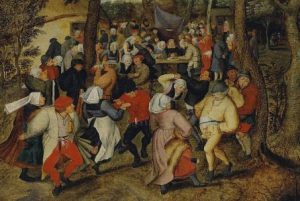
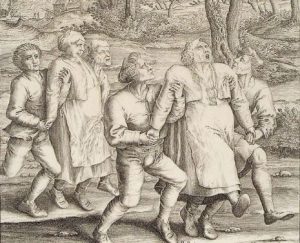 Many of us have heard of “dance mania” or “dance fever,” but I wonder how many people realize that those were real things. There have been a number of times in history when people were suddenly compelled to dance without stopping. In fact, they really couldn’t stop until they fell down with exhaustion. Then they would sleep a while, and start all over again. Many times the victim of this disease, would cry out in pain, begging someone to help them. They could not stop. Their feel would blister and bleed. Their muscles would spasm. Tears would flow from their eyes, but still they danced. Some people danced until they actually fell down dead.
Many of us have heard of “dance mania” or “dance fever,” but I wonder how many people realize that those were real things. There have been a number of times in history when people were suddenly compelled to dance without stopping. In fact, they really couldn’t stop until they fell down with exhaustion. Then they would sleep a while, and start all over again. Many times the victim of this disease, would cry out in pain, begging someone to help them. They could not stop. Their feel would blister and bleed. Their muscles would spasm. Tears would flow from their eyes, but still they danced. Some people danced until they actually fell down dead.
The Strasbourg plague started with Frau Troffea in July of 1518. That day, she just stepped outside her small home in Strasbourg and started to dance. She might have seemed happy, but she didn’t stop. Frau Troffea danced the entire day. Her husband was not happy. No cleaning was done, no cooking, and if they had children, they weren’t taken care of either. She only stopped dancing when she collapsed that night for a few hours of restless sleep. Then, with the sun rise, she began dancing again. To the horror of her husband, a crowd gathered around his dancing wife, who swayed to the sound of silence. There was no music…except maybe in her head. She paid no attention to anything going on around her. She just danced, even though her feet were bloody and bruised. It was almost as if she was just crazy, but that couldn’t be it, because within days, at least thirty other dancers had joined Frau Troffea. It was just the beginning of the strangest plague to strike medieval Europe. The people called it “dancing mania,” and it soon spread to even more people in Strasbourg. A reporter at that time, Daniel Specklin said that there were “more than one hundred” dancing at the same time. Someone else estimated the number at closer to four hundred. The strange epidemic quickly became a crisis for the city of Strasbourg, and the city council had no idea how to stop the dancing, which is a strange idea to me anyway. What could the city council do, if the doctors couldn’t help?
The only thing anyone was sure of, was that…the dancers were not happy. They writhed in pain. They begged for mercy. They screamed for help. As summer stretched on, the dancing epidemic started to claim lives. One chronicle reported that during the heat of the summer, as many as fifteen people died every day from dancing. It makes sense, they probably couldn’t stop to eat or drink. Exhaustion, dehydration, and starvation finally took their toll, and the victim simply died. Thinking it might be a curse, the city cracked down on the possible connection to sin. Brothels and gambling houses were closed. Everyone knew that gaming and prostitution angered the saints, who might have sent the dancing plague to punish Strasbourg. So, the city rounded up all the “loose persons” and banished them from the city. It didn’t help. They prayed and lit candles, hoping that a return to their faith might lift the “curse” for the town. They banned dancing, effectively making all the victims, “criminals” as well.
Desperate, as the end of summer neared and the dancing mania continued, the city took a drastic step. A reporter of the time described the cure. “They sent many on wagons to St. Vitus,” a shrine at the top of a mountain. The dancers continued to fall down in front of the altar, so the priest said Mass over them, and “they were given a little cross and red shoes, on which the sign of the cross had been made in holy oil, on both the 
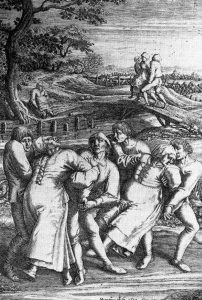 tops and the soles.” It was thought that they were possessed. The red shoes did the trick. The dancing epidemic slowly came to an end, and most of the dancers regained control of their bodies. The strange ailment started to be called “St. Vitus’ Dance,” either because the saint had cured the dancers, or because he was responsible for the original curse. Strange idea either way. Whether they were possessed, or the “illness” just ran it’s course, the trip to Saint Vitus marked the beginning of the end of the Dancing Plague. It is now believed that the people suffered from mass hysteria, due to the stresses of the day. A Small Pox plague and a Leprosy plague had been through the area, as well as several years of failed crops and famine. It makes sense I guess, but what a strange way for it to manifest. Apparently, a trip to the church to see the priest was enough to calm their fears and stop the plague.
tops and the soles.” It was thought that they were possessed. The red shoes did the trick. The dancing epidemic slowly came to an end, and most of the dancers regained control of their bodies. The strange ailment started to be called “St. Vitus’ Dance,” either because the saint had cured the dancers, or because he was responsible for the original curse. Strange idea either way. Whether they were possessed, or the “illness” just ran it’s course, the trip to Saint Vitus marked the beginning of the end of the Dancing Plague. It is now believed that the people suffered from mass hysteria, due to the stresses of the day. A Small Pox plague and a Leprosy plague had been through the area, as well as several years of failed crops and famine. It makes sense I guess, but what a strange way for it to manifest. Apparently, a trip to the church to see the priest was enough to calm their fears and stop the plague.
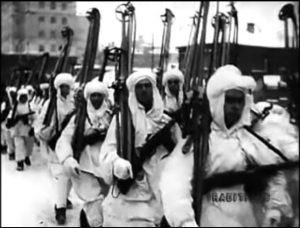 As a part of his planned world takeover, Hitler had sent his forces to invade the Soviet Union in June 1941. Early on it had become one relentless push inside Russian territory, but the Nazis experienced their first setback in August, when the Soviet Army’s tanks drove the Germans back from the Yelnya salient. A shocked Adolf Hitler told General Bock at the time, “Had I known they had as many tanks as that, I’d have thought twice before invading.” Personally, I doubt that it would have made any difference. Hitler did not particularly care about the lives of his men, just that they perform as they were ordered. For the men, there was no turning back because Hitler would not be moved. Hitler firmly believed that he was destined and well able to succeed in dominating the Soviet Union and capturing Moscow, where others had failed.
As a part of his planned world takeover, Hitler had sent his forces to invade the Soviet Union in June 1941. Early on it had become one relentless push inside Russian territory, but the Nazis experienced their first setback in August, when the Soviet Army’s tanks drove the Germans back from the Yelnya salient. A shocked Adolf Hitler told General Bock at the time, “Had I known they had as many tanks as that, I’d have thought twice before invading.” Personally, I doubt that it would have made any difference. Hitler did not particularly care about the lives of his men, just that they perform as they were ordered. For the men, there was no turning back because Hitler would not be moved. Hitler firmly believed that he was destined and well able to succeed in dominating the Soviet Union and capturing Moscow, where others had failed.
So, on October 2, 1941, the Germans began their surge toward Moscow, led by the 1st Army Group under the General Fedor von Bock. The Germans and Hitler thought they could come in and mow the people down with no resistance. Then they thought they could take their resources from the people to sustain them through the winter months, while they continued to plunder the country. The Russian peasants had different ideas, however. 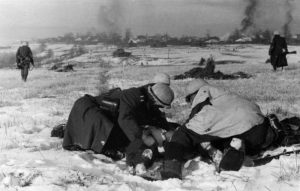 As the Germans approached, the peasants in their path employed a “scorched earth” policy. I’m not a veteran or anything, so somehow I hadn’t heard of this strategy. The idea is to destroy anything and everything that could be useful to the enemy.
As the Germans approached, the peasants in their path employed a “scorched earth” policy. I’m not a veteran or anything, so somehow I hadn’t heard of this strategy. The idea is to destroy anything and everything that could be useful to the enemy.
This strategy could prove especially useful for the Soviet Union because of the harsh Russian winter. The Russians remembered Napoleon and the fateful winter he and his men spent in the frigid Russian winter. The peasants began destroying everything as they fled their villages, fields, and farms. Harvested crops were burned, livestock were driven away, and buildings were blown up, leaving nothing of value behind to support exhausted troops. Hitler’s army invaded Russia to find nothing but ruins. On top of the lack of shelter and food, winter was upon them, and they were in trouble.
Hitler was a stubborn cuss, and although some German generals had warned him against launching Operation Typhoon as the harsh Russian winter was just beginning, he would not be moved. The generals remembered the fate of Napoleon, who got stuck in horrendous conditions. Over the course of that winter, Napoleon lost 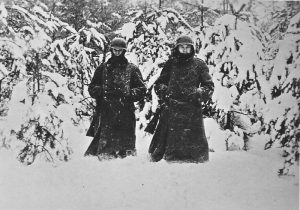 serious numbers of men and horses. Still, some people urged him on. This encouragement, coupled with the fact that the German army had taken the city of Kiev in late September, caused Hitler to declare, “The enemy is broken and will never be in a position to rise again.” So for 10 days, starting October 2, the 1st Army Group drove east, drawing closer to the Soviet capital each day, but by the time the operation was over on January 7, 1942, the German army had not reached Moscow. German casualties amounted to 460,000 men, many of whom were frozen to death due to the lack of proper clothing to handle the harsh Russian winters. It was a catastrophic loss to the the German army.
serious numbers of men and horses. Still, some people urged him on. This encouragement, coupled with the fact that the German army had taken the city of Kiev in late September, caused Hitler to declare, “The enemy is broken and will never be in a position to rise again.” So for 10 days, starting October 2, the 1st Army Group drove east, drawing closer to the Soviet capital each day, but by the time the operation was over on January 7, 1942, the German army had not reached Moscow. German casualties amounted to 460,000 men, many of whom were frozen to death due to the lack of proper clothing to handle the harsh Russian winters. It was a catastrophic loss to the the German army.

